As a kid growing up in East Texas, I can count on one hand the times I actively fished the plentiful little creeks and seeps that flowed into the big and muddy Sabine River near my home. There were lots of reasons for this, not the least of which was that most of these little runs were secreted away on private lands, where property owners were quick to post them against trespassers or, just as often, to dam them up to create watering holes for Brahma or Angus cattle or private farm ponds stocked with bass and panfish.
There were a couple of “urban” streams that flowed through our little city, but access was tough and, frankly, when I did bother to fish, it was almost always disappointing. Little fish. Muddy, polluted water. It was easier and more productive to just trespass into a little neighborhood pond on the grounds of an old, abandoned (and definitely haunted) mansion and take our chances with the rail-hopping transients that traveled by freight train in 1980s Texas.
Besides, creek fishing … that’s a mountain thing. A trout thing. I still do it today — it’s my favorite kind of fishing. Walking and wading a cold, clear mountain stream for wild trout amid the alpine wallpaper is tough to beat.
But, truth be told, if I had access to a time machine, I’d go back and find a way to let my 12-year-old self know that I was missing out. I’d tell me that there are creek freaks in East Texas, and there are fish — seriously decent fish, too — ready and willing to be caught by just about anyone who can muster up the nerve to step into the cool, forest-shaded streams that run just a bit stained and dark through the piney woods.

That it took me some 40 years to figure it out is a little shameful. But thanks to my friend Rob McConnell, author of “Fly Fishing the Sam,” I now know what I wish I knew when I was young and too naive to be terrified of copperheads, cottonmouths and giant alligator snapping turtles. Creek fishing in the wilds of East Texas is a thing. And the fishing is good. Really good.
A couple of weeks back, Rob and I ventured into a tributary of the San Jacinto River on a rare parcel of public land in East Texas — the Sam Houston National Forest. The creek runs about an hour north of Houston through a beautiful stretch of pine and oak woods near the little town of Coldspring. The real attraction for most anglers, though, isn’t the subtle little fork of the San Jacinto. It’s bass country, and the nearby impoundments of Lake Livingston and Lake Conroe draw gear fishers from all over the region.
The creek fishing on “the Sam?” There’s a small cult of creek freaks, of which Rob might be the reluctant Grand Poobah. These ego-free anglers string together 3-weight fly rods and ghost into the woods to chase fish in water that, in many areas, can be easily stepped across. And no, these folks aren’t catching giant fish — consider the environment. While anglers might find a genuine largemouth bass in the little creeks hidden in woods, that fish isn’t going to be trophy quality. Instead, they garner satisfaction from the fact that, aside from the aforementioned largemouth, most of the fish they bring to hand are true Texas natives. Red-breasted sunfish, long-eared sunfish, channel catfish and native spotted bass. The latter are the modest trophies of the East Texas woods — feisty and aggressive, they will put an appreciative bend in a light-weight fly rod, and they’re handsome fish that have forged their own little fork in the American black bass family tree.
Technically native from southern Kansas south to coastal Texas and east to West Virginia, the spotted bass of southeast Texas is adapted to the flowing waters of the region, from the Sabine to the Neches and west to Trinity and San Jacinto. In the truly small water — like the little creek that Rob and I fished — spotted bass behave a lot like other predatory fish in small water, including trout. They don’t shy away from current and they’ll hit dry flies, nymphs and small streamers. Rob’s favorite fly — the San Jac Squirrel — mimics everything from a swimming dragonfly nymph to a baitfish. The spotted bass of the Sam Houston National Forest’s quiet creeks absolutely love them. But, over the course of two days spent fishing small water in the San Jacinto system, we caught spotted bass on everything from articulated streamers to honest-to-God trout flies, like a Parachute Adams (no, I’m not kidding).

The spotted bass isn’t to be confused with the Guadalupe bass, a much more heralded subspecies of black bass that’s found in the creeks and streams of the Texas hill country. While the Guadalupe bass enjoys the honor of being Texas’ designated state fish, the spotted bass of the piney woods is often forgotten as an angling afterthought. They aren’t generally targeted by anglers looking to harvest fish because, well, they just don’t get that big — a foot-long spotted bass is a rarity outside of a large reservoir where they compete with their larger, Florida-strain largemouth cousins. In fact, the Texas state record for spotted bass is a modest 5.56 pounds, and it came from Lake o’ the Pines in northeast Texas way back in 1966. For comparison, the state record largemouth bass clocked in at 18.18 pounds, and was caught in Lake Fork in 1992.
But for avid small-stream anglers, the spotted bass punches above its weight class. It’s acrobatic, prone to leaps from the water. But it can also be a bulldog and tie up a dilatory angler in structure, like subsurface root wads. Its best attribute is its aggressive nature — like a lot of predatory fish in small water, it absolutely hates to see a meal get away. Many of the fish we brought to hand hit flies just as they were about to be stripped out of deeper water and into shallows. The opportunistic fish would grab flies on the swing and the strip, but they really liked flies that looked like they were just about to retreat to safety.
The fishing for the spotted bass and their native brethren in the small waters of the Sam Houston National Forest was reminiscent of a backcountry trout trudge, minus the majestic views of craggy peaks and ice-cold snowmelt. Instead, the pine, oak and sycamore canopy shaded the little creek, and water that gathered from untold numbers of cool springs gathered to create the ideal habitat for these native fish. No, the landscape isn’t as dramatic, but it’s no less stunning to the eye of a confirmed small-stream angler.
And, thanks to Rob, I’ve arrived at Texas creek freak status — something I wish I’d been able to accomplish all those years ago when I lived among the tall pines in the river country of the region. Add in the fact that there are a few stretches of public lands along the east side of the Lone Star State, and it’s got me curious about the small-stream fishing elsewhere in the area.
There’s only one way to find out, right? I’ll venture back to the familiar piney woods of East Texas again soon, and I’ll let the inner 12-year-old kid who used to tromp through woods out to play.
Better late than never, right?




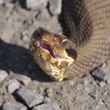

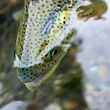



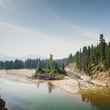
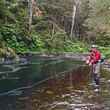



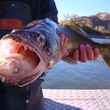




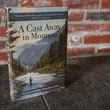
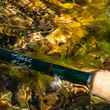




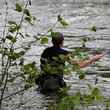



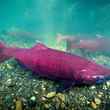
Comments